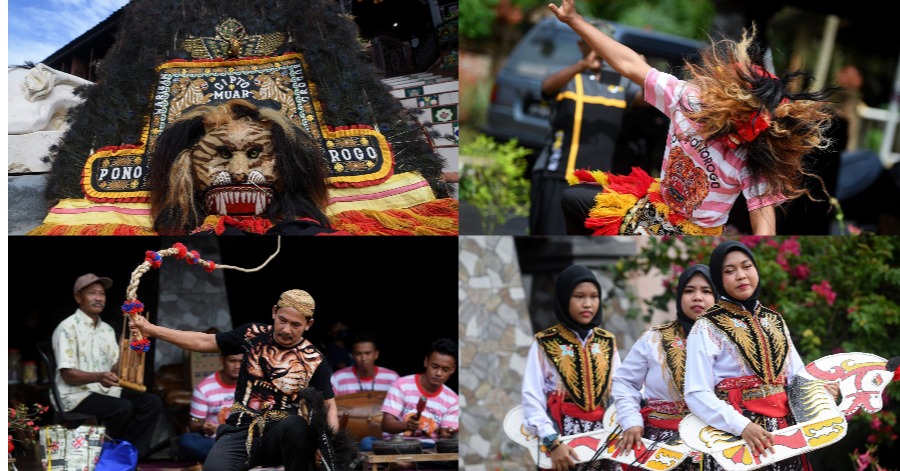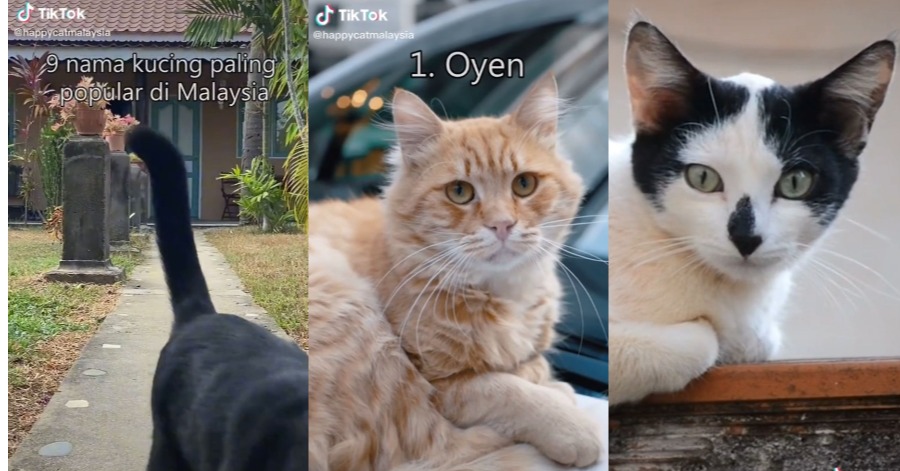MUAR(Bernama) – In Kampung Parit Bugis, located about 32 kilometres from here, family members of early Javanese settlers are striving to uphold their traditions, notably thebarongandance,
Native to the Javanese and Balinese cultures, thebarongandance is performed by dancers wearing masks and costumes who narrate the fight between good and evil through their steps and movements.
Kampung Parit Bugis has its own ensemble called Kumpulan Barongan Warisan Bistari with 22 members who have taken it on themselves to preserve the dance tradition they inherited from their forefathers who were originally from Ponorogo in Java and settled in Johor during the 1930s.
The group members, aged between seven and 65, reside in Kampung Parit Bugis and other nearby villages.
Several journalists had the opportunity to watch the group perform the barongandance when they visited Kampung Parit Bugis as part of the Southern Hidden Gems media tour programme from Nov 23-26 organised by Tourism Malaysia.
Performing at Keraton Embah Anang – a house designed in the traditional Balinese style belonging to one of the local villagers – the dancers succeeded in mesmerising their audience with their presentation.
Six girls portraying askuda kepang(another Javanese art form) dancers and accompanying the beat of traditionalgamelanmusic enact a dance drama whose deep plot is conveyed to the viewers through their moves.
The show reaches its climax when a man wearing a lion mask suddenly emerges as if to enchant the female dancers, who are also known asjatildancers.
THE STORY BEHIND BARONGAN
Mohd Nazaruddin Md Sintar, 48, who heads Kumpulan Barongan Warisan Bistari and belongs to the fourth generation of a family ofbarongandancers, said they make their own props and costumes, except for the lion mask which was imported from Ponorogo at a cost of RM3,000.
He said in the olden days in Java, thebarongandance was only performed at royal courts and functions attended by royalty.
“However, following the end of the Javanese sultanate, it became a folk dance and was performed all over Java. It was (later) introduced to Malaya together with other (Javanese) art forms likekuda kepangandwayang kulit(shadow play), and gamelan music,” he said.
According to Mohd Nazaruddin, thebarongandance performed in Java and Malaysia sports some differences in terms of the movements and the costumes and musical instruments used, although most of the original elements of the dance have remained intact.
“The passage of time and changes in the aspirations of Malaysians have resulted in thebarongandance being tweaked a little. For example, in Malaysia, we don’t use the trumpet (as a musical instrument) for our performance but it’s still used in Java,” said the father of five children aged between seven and 22.
Relating the history of Ponorogo’sbarongandance, Mohd Nazaruddin said it is based on the mythical tale of a princess called Puteri Songgo Langit whose hand in marriage was sought by Warok and a king named Perabu.
Warok, who hails from the land of Bantara, has the head of a tiger and the body of a man but he is rejected by the princess as she is King Perabu’s betrothed. But Warok keeps forcing her to marry him.
“Then they decided to enact a performance to see who – Perabu or Warok – can win the princess. The winner will get to marry the princess while the loser will be cursed to turn into a tiger.”
Mohd Nazaruddin said the barongan dance comprises three sets, the first one featuring thejatildancers, the secondbarongtiger dancers and the thirdbujang ganongdancers.
“Usually, when we are performing at weddings and state official functions, we skip the part played by the princess… if we were to portray all the characters contained in the myth, then we would need a lot more dancers and artistes, as well as a bigger stage and more time.
“So, we modified thebarongandance into a folk art performance to introduce our audience to our Javanese heritage,” he said, adding that up to 25 dancers and musicians perform in each of theirbaronganperformances.
MYSTICAL ELEMENTS
Mohd Nazaruddin also stressed that the barongandance performed by his group does not contain any mystical element associated with that art form.
“We don’t present the element of possession (by a supernatural power) because for us, thebarongandance is a performance, not a game,” he said, adding that there are cases ofbarongandancers who are said to be endowed with a “special power” that enables them to, among other things, eat glass and play with fire without hurting themselves.
These mystical practices, however, are prohibited by the Johor government as they contravene Islamic teachings.
Mohd Nazaruddin, however, admitted that duringkuda kepangperformances, some of the dancers become so deeply engrossed in their movements that they appear to be in a trance-like state (and oblivious to their surroundings).
“As the leader of the group, I would go around with a whip because it is the best weapon to stop any dancer from stepping out of line,” he added.
He also said that currently, there are only seven groups performing thebarongandance in Johor, compared to dozens that existed in 2004.
“In Muar, only my group exists with the rest of them based in the Batu Pahat area, especially in Parit Baru and Parit Bingan,” he said.
He said after he took over Kumpulan Barongan Warisan Bistari from his grandfather in 2004, he has been focusing on training the younger generation to perform thebaronganandkuda kepangdances. He also trains his four sons and a daughter so that they can one day take over the dance legacy from him.
“In learning these traditional art forms, one needs to be highly disciplined and must always obey the leader’s instructions and should not brag,” he added.




Leave a Comment